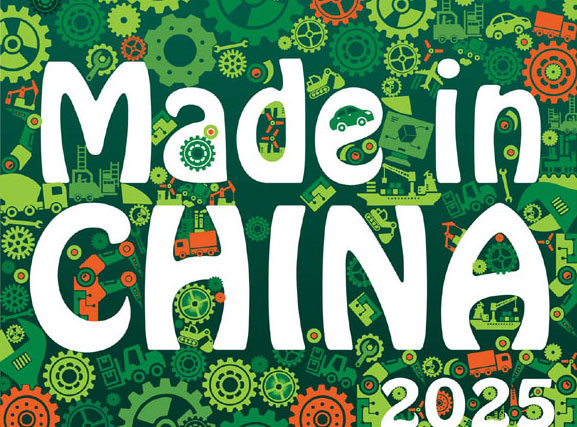For Denmark, it is easy being green
Updated: 2015-10-09 07:22
By Fu Jing(China Daily Europe)
|
|||||||||||
|
By burning waste,the 97-meter-high Energy Tower on the outskirts of Cophenhagen produces electricity for 65,000 homes and heat for 40,000 homes. The bulding's lighting effect is also a noteworthy part of its design. Fu Jing / China Daily |
Danish firms hope for a ready market in China for technologies developed thanks to their long-term environmental leadership
Businesses in Denmark are preparing for "green" opportunities in China, hoping their cutting-edge technology will help them grab market share as the Asian giant speeds up its transition to low-carbon development.
Some companies have even rolled out their own versions of a 2020 strategy to seek synergy with China's upcoming 13th Five-Year Plan (2016-2020) for National Economic and Social Development, which will focus on a cleaner policy portfolio for growth.
Some are doing research on zero-emission technologies, which may be applied to vehicles after 2020 in China. And some already are thinking of jointly exploring third-party markets outside Denmark and China.
Danfoss, a global leader in heating and cooling, has been in China a long time and is one of the pioneering Danish companies that has tailored its development strategy to China's mega policy trends.
One leading trend is the so-called economic new normal, which reflects China's economic growth slowing from a sizzling two-digit rate to closer to 7 percent annually while maintaining balanced and sustainable development.
"We have to come to terms with the transition from booming to slowdown in China, while I think 7 percent growth is still a lot," Jurgen Fischer, president of Danfoss Cooling, says.
Fischer says the company has established a solid presence over time, including a long business chain. "Amid changes in China, all these advantages will help us expand our business smoothly in this country if our strategy is correct," he says.
His company recently rolled out a 2020 strategy for the China market, indicating that China is still a "super interesting" market for the clean-tech company, which has been expanding there for decades.
The 18th Communist Party of China Central Committee will hold its fifth plenary session in Beijing soon, and high on the agenda is the 13th Five-Year Plan for National Economic and Social Development. This program would be implemented after ratification by the National People's Congress in March.
Fischer says that compared with India, China is better prepared and more active in supporting low-carbon development leading up to the United Nations Climate Summit in Paris at year's end.
"I believe that this will bring more opportunities for both Chinese and European companies," says Fischer.
Encouraged by his long-term outlook, the president of Danfoss Heating, Lars Tveen, says a pilot project in Northeast China that recycles surplus heat should be used in more Chinese cities.
With help from Danfoss and the Danish energy-consulting group COWI, Anshan city in Liaoning province has tapped into the surplus heat from a local steelmaking facility to provide heating to 3.8 million residents. For years, the residents primarily burned coal, a major source of air pollution, to provide heat during the winter.
"The Anshan project is like a stone dropped into water and now we have seen the ripples," says Tveen, adding that more cities in China are inviting companies to bring in such facilities.
There are a number of benefits, according to Tveen. First, surplus heat can be sold. Second, the burning of coal is reduced and the reduction in the carbon quota could be sold in the national cap and trade market that China has promised to set up in 2017.
Third, Tveen says, air in the city is cleaner, with the pilot project covering half of the urban population having reduced carbon dioxide emissions by 289,000 metric tons.
"So in China we are not only talking and talking. We are offering a recipe," says Tveen.
With China toughening its measures to cut pollutants from vehicles, Danish companies have been preparing for new opportunities, even though this country of about 5.6 million people doesn't have a single auto assembly line.
Amminex Emissions Technology, based in Soborg, is among them. This rapidly growing Danish clean-tech company, in the diesel engine emissions reduction business, offers a system for ammonia storage and delivery, which reduces emissions of some toxins from diesel exhaust.
Annika Isaksson, chief executive, says the company's product is ideal for the Chinese market, where smog has become a public concern in many cities.
"We are approaching our China partners and we aim to bring our products to China's market by the end of 2016," she says.
Today's Top News
Opinion: Opportunity knocks for EU and China over next five years
Yuan rises for 7th day in a row, highest level since August
Reforms spark legal brain drain
High-tech zones up the game
EU officials postpone visit to Turkey after attacks in Ankara
Documents of Nanjing Massacre inscribed on Memory of World Register
Xi congratulates Kim on WPK anniversary
CPC expels media exec over UK 'green card'
Hot Topics
Lunar probe , China growth forecasts, Emission rules get tougher, China seen through 'colored lens', International board,
Editor's Picks

|

|

|

|

|

|








